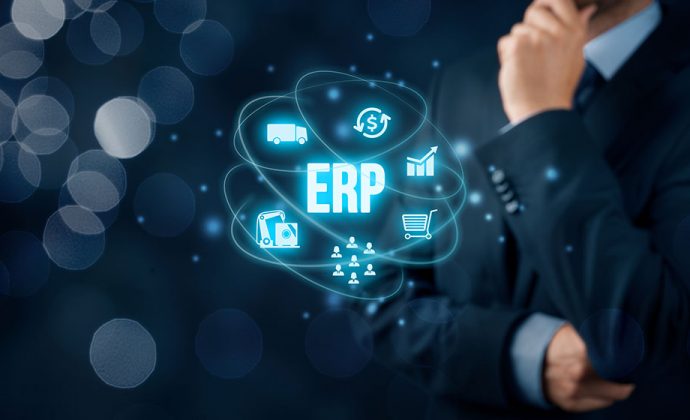Unlocking Instant Insights: My Story of How Real-Time ERP Revenue Reporting Transformed My Business
Remember those days when you’d finish a busy month, breathe a sigh of relief, and then the real work began? Not the exciting, growth-oriented work, but the tedious, head-down, spreadsheet-crunching work. For years, that was my reality. I owned a growing business, and while I loved the hustle, the one thing that always kept me up at night was a nagging question: "Am I truly making money, right now?"
I felt like I was driving a car with a blindfold on, only getting to peek at the dashboard once a month. It was frustrating, to say the least. But then, something shifted. I discovered the magic of ERP Real-Time Revenue Reporting, and it wasn’t just a software upgrade; it was a complete paradigm shift for my business, and honestly, for my peace of mind.
Let me tell you my story.
The Dark Ages of Delayed Data: My Pre-ERP Struggles
Before I embraced an ERP system with robust real-time capabilities, my business operated in what I now affectionately call "the dark ages of delayed data." Here’s what it looked like:
- The Monthly Scramble: Every end of the month, my small team and I would gather all the sales invoices, payment receipts, returned items, and endless spreadsheets from different departments. Sales had their system, inventory had theirs, and accounting had another. It was a data jigsaw puzzle, and we were always missing pieces.
- Gut Feelings, Not Facts: I made most of my critical business decisions based on my "gut feeling" and historical data that was weeks, if not months, old. Should I invest in more inventory for a particular product? Is this marketing campaign actually working? Are our profit margins shrinking? I wouldn’t know until it was often too late to react effectively.
- Cash Flow Anxiety: This was perhaps the biggest stressor. I knew money was coming in, but how much exactly? How much was outstanding? How much did I need to pay out soon? Without a clear, up-to-the-minute picture, managing cash flow felt like walking a tightrope in the dark. I often found myself crossing my fingers, hoping we’d hit our targets, instead of knowing for sure.
- Missed Opportunities: There were times I’d realize a product was selling like hotcakes after it was already out of stock. Or I’d spot a dip in sales for a particular region weeks after it started, by which time the trend was already entrenched. These delays cost me revenue and customer satisfaction.
It was exhausting. My business was growing, but my ability to understand and steer it wasn’t keeping pace. I needed a better way to get instant revenue insights and real-time financial visibility.
My "Aha!" Moment: Discovering the Power of Real-Time
I remember a conversation with a fellow business owner who seemed remarkably calm despite running a much larger operation than mine. I confessed my struggles, and he simply smiled. "You need to get yourself a proper ERP system, especially one with real-time reporting," he said.
Honestly, I was skeptical. ERP sounded like a huge, complicated, expensive beast meant for multinational corporations, not my relatively modest business. But he explained it differently. He talked about integrated data, a single source of truth, and how he could see his company’s revenue performance as it happened.
It sounded like magic. A dashboard for my business that updated itself automatically? No more manual data entry or waiting for monthly reports? I was intrigued. After some research and a few demos, I took the plunge. It was one of the best decisions I ever made.
What Exactly Is Real-Time ERP Revenue Reporting? (For Beginners)
Let’s break it down in simple terms, because "ERP Real-Time Revenue Reporting" can sound intimidating.
Imagine your business is like a car. You wouldn’t want to drive that car if its speedometer, fuel gauge, and engine light only updated once a month, right? You need to know what’s happening now to make safe and effective decisions.
ERP Real-Time Revenue Reporting is essentially that "live dashboard" for your business’s money-making activities.
- ERP (Enterprise Resource Planning): This is the core system. Think of it as the central nervous system of your business. It connects and manages all the different parts of your operation – sales, inventory, accounting, customer service, purchasing, manufacturing, human resources, and more – into one single, unified system. Instead of separate spreadsheets or software for each department, everything talks to each other.
- Revenue Reporting: This is about tracking all the money coming into your business from sales of products or services.
- Real-Time: This is the game-changer. It means that as soon as a sale is made, an invoice is sent, a payment is received, or a return is processed, that information is immediately updated and reflected in your reports. There’s no delay. No waiting for batch processing. No manual data transfer. It’s live, dynamic data at your fingertips.
So, in essence, it’s a system that automatically collects and processes all your sales and financial data as it happens, giving you an up-to-the-minute view of your business’s financial performance.
More Than Just Sales Numbers: The Integrated Picture
The beauty of a good ERP system is that it doesn’t just show you raw sales figures. Because all your departments are connected, it pulls data from everywhere to give you a richer, more meaningful picture:

